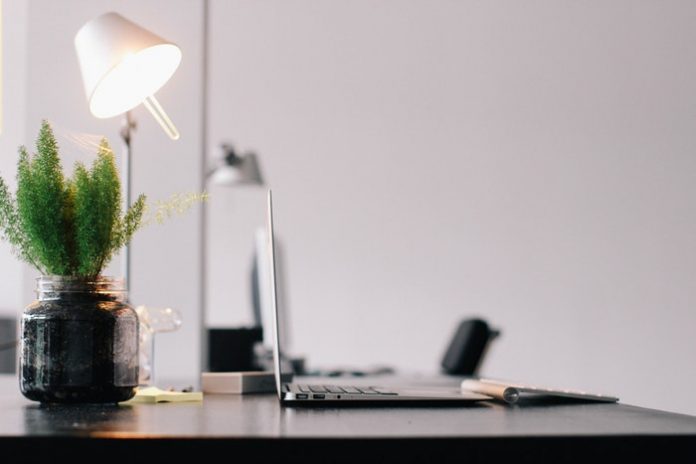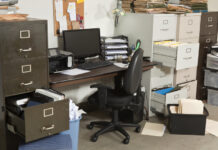Working from home comes with some perks. You enjoy a better work-life balance, don’t have to commute to the office and get to work in your pajamas if you want. Designing your home office space can be an upside, too — if you’re not stuck in a cramped room all day.
Do you love the space you’re in? If not, you won’t be motivated to put in hours there. It’s essential to create a space that both supports your workload and inspires creativity. Discover seven ideas to help you design the ultimate home office.
1. Choose Color Strategically
While some people like bright colors, you might not want to see the same lemon yellow or lime green every day. Paint your office walls a neutral or pastel hue to give your eyes a break. You should also avoid darker colors, as they tend to make small spaces feel even smaller.
This doesn’t mean your home office needs to be completely neutral. There’s plenty of room for flair, too. Throw in some accent pieces, like a patterned rug or framed art, to spice things up.
2. Play with Natural Light
When deciding where to place your desk, you might reflexively push it into a dark corner, inadvertently creating an office cubicle. Tucking yourself into a small space can make your home office feel much more oppressive than it needs to be. There’s a reason so many modern offices are switching to a more open layout, after all.
Instead, look for areas where natural light flows in your home. Move your desk close to windows while keeping it parallel to the panes to reduce glare. You can also add curtains to help you manage the amount of light that enters your workspace each day, particularly around lunchtime.
3. Embrace the Benefits of Houseplants
According to experts, house plants improve concentration and productivity by up to 15 percent, reduce stress and boost your mood. This means working from home can be even more comfortable with some potted plant companions.
To create a long-lasting green space, conduct a little research on which plants will do best indoors. Most house plants don’t like direct sunlight, so keep your leafy friends in a shady spot. If you aren’t one to remember watering, consider adding a small succulent or cactus to your workspace. These desert natives will tolerate neglect for years.

4. Get Creative with Storage
Functionality should come before beauty when your home office offers little space to work with. Filing cabinets and folders aren’t exactly chic, but they do get the job done. You can also experiment with wall storage, magazine racks or display shelves to keep your stuff in order.
Another option is to build an adaptable storage wall with floor-to-ceiling supports. A wall is excellent for smaller workspaces, as it doesn’t take up as much space as desks, bookshelves or cabinets. Plus, it will create a stunning backdrop for video conferences with clients or peers.
5. Try to Get Comfortable
Working from home means sweatpants and fuzzy socks, right? Yet getting comfortable in your home office requires more than cozy clothes. To be productive, you must have an office space that’s comfortable to be in. Otherwise, you won’t want to be there at all.
First, take care of your physical needs. Ergonomics are critical to your long-term comfort in a small home office. Invest in a quality office chair with back support. Consider an adjustable table or desk you can raise to the perfect height. Perhaps purchase anti-glare glasses or screen covers to give your eyes a break.
Then, take care of your mental focus by adapting your environment when needed. Don’t be afraid to experiment with design strategies and switch up your workspace periodically. New plants, photos and lighting fixtures can easily help the same small space feel fresh.
Once you find a layout and furniture to support your creativity and wellbeing, you’ll be inclined to put in the hours.
6. Hide All Distractions
You don’t have much room to hide from distractions in a small home office. Do yourself a favor and remove them from your space before the workday begins. Set yourself up for success by placing your smartphone out of sight and putting novels and musical instruments in the next room. Anything within reach is a potential distraction. You can always reward yourself with a break later.
Items aren’t the only sources of distraction when you work from home, however. Conversations can be just as time-consuming as a good book. Avoid this obstacle by placing your home office in a room with low foot traffic. Find a quieter corner of the house to limit conversation and boost your productivity.
7. Declutter Your Office
Things have a way of piling up in a home office. If you don’t have much space to work with, clutter can be debilitating. Dog toys, children’s books, empty wrappers and dirty mugs can all find their way into your space. Declutter often to keep your office clean and help you concentrate.
To clear out office space, start three piles — move, donate and get rid of. The move pile is items you want to keep but should place in another room. The donate pile is items you no longer want that are in good condition. Last but not least, the trash pile can head out to the dumpster.
Put your foot down if family members want to use your space to store boxes of clothes or holiday decorations. Resist the urge to store your items, too. You’ll have a hard time keeping your head clear if surrounded by junk.
How to Optimize Small Home Office Spaces
Working from home doesn’t exclude you from personalizing your office space. Start by choosing a paint color that will leave you relaxed. Then, create a layout that offers flexibility and plenty of storage. Once your desk is in place — ideally near a window — it’s time to decorate.
We don’t all have the luxury of a spacious home office. Fortunately, a few design tweaks can level up our office space and help a cramped space becoming a zone for focused work. The real strategy is to make your home office a space you want to spend time in. After, the work will come naturally.
Find a Home-Based Business to Start-Up >>> Hundreds of Business Listings.

















































